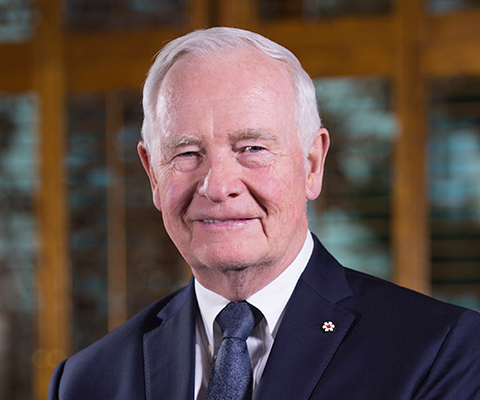University and college students should have access to work-integrated learning

OTTAWA – Making work-integrated learning a fundamental part of the Canadian undergraduate experience is one of several commitments recently made by the Canadian Business/Higher Education Roundtable – a year-old organization representing some of Canada’s leading companies and post-secondary institutions.
Roundtable members agreed on an ambitious forward agenda, which includes:
- A national goal for work-integrated learning – to ensure 100 per cent of Canadian post-secondary students benefit from some form of meaningful work-integrated learning before graduation.
- A national campaign to promote the importance of work-integrated learning.
- A series of work-integrated learning pilot projects focused on meeting regional and sectoral workforce needs and improving school-to-work transitions for young Canadians.
The Roundtable is co-chaired by Dr. Elizabeth Cannon, chair of Universities Canada and president of the University of Calgary; Tom Jenkins, chair of OpenText Corporation; and Anne Sado, president of George Brown College. Its mission is to strengthen partnerships among universities, colleges, polytechnics and private-sector employers.
“The Business/Higher Education Roundtable is advancing new ways for employers to partner with post-secondary educational institutions, with a clear focus on improving outcomes for our students and graduates,” said Ms. Sado. “We are focused on targeted solutions and actionable initiatives, motivated by a commitment to better collaboration – in skills development, work-integrated learning and in research and commercialization.”
The Roundtable gathered at George Brown College in Toronto in late April to assess a year of collaboration and chart a course for the future. Roundtable members confirmed that a rapidly changing work environment for entry-level employees required immediate action and leadership.
“New technologies, disruptive innovation, demographic shifts and intense global competition for talent are quickly raising skill requirements and changing expectations for new graduates,” said Mr. Jenkins. “To ensure our next generation can compete and succeed in the 21st century knowledge economy, we must take concrete steps towards a system in which Canadian companies and institutions are more efficiently and effectively connected.”
The Roundtable’s commitment to improve work-integrated learning will include cataloguing and sharing best practices, working with public sector partners on performance measurement and reporting systems, and advocating innovative initiatives. Roundtable members also encouraged the growth and development of work-integrated learning programs beyond traditional co-ops and internships, such as capstone projects, hackathons, industry challenges, mentorship programs and boot camps.
“As educators, we need to ask how we can better prepare young Canadians for a world increasingly reliant on technology,” said Dr. Cannon. “How do we ensure that the fundamental skills learned in higher education – the ability to unravel big problems, to work in diverse teams, and to communicate complex issues – are aligned with rapidly changing workforce needs? This is what the Roundtable is working on.”
Strengthening innovation and research partnerships is also high on the Roundtable’s list of priorities. Members committed to studying how the Roundtable could identify and scale best practices in Canada, with a specific focus on successful research consortiums and existing innovation clusters. The Roundtable also agreed to explore the potential of setting “grand challenges” and motivating groups of researchers to find the most effective solutions to those challenges.
“There’s a significant amount of world-class research – from basic to applied – taking place in Canada’s post-secondary institutions and across the business community, but too often the researchers aren’t talking to one another,” said Mr. Jenkins. “When you combine academic research and cutting-edge industry R&D, you create a catalyst for innovation on a much bigger scale.”
Prior to the meeting, the Roundtable’s Honorary Patron, Governor General David Johnston, addressed the participants by video, saying “The first face-to-face meeting of the Business/Higher Education Roundtable is cause for celebration. Even in an age of instant global communication, there is no substitute for sitting down together, as all of you are today. This is especially true when different sectors come together to map a common strategy for the future. The Business/Higher Education Roundtable is doing exactly that.”
Background on work-integrated learning
Work-integrated learning is an umbrella term for partnerships between schools and employers that combine classroom learning with practical experience.
Examples of work-integrated learning include:
- Co-ops
- Field experiences
- Internships
- Mentorship programs
- Research/capstone projects (long-term projects targeting specific industry problems)
- Boot camps (short-duration programs co-developed by employers and post-secondary institutions that focus on particular skill sets)
- Competitions (team-based contests in which students develop industry solutions within a short time frame)
Benefits of work-integrated learning:
For students:
- Source of relevant experience to ease the transition from education into the workforce.
- Application of classroom concepts to workplace scenarios.
- Longer placements, such as co-ops, can be sources of income.
For post-secondary institutions:
- Successful work-integrated learning programs tend to attract top students.
- Opportunity for feedback from employers on programs and curricula.
- Help strengthen partnerships with industry.
For employers:
- Opportunity to evaluate potential new full-time employees.
- Direct role in equipping students with skills needed in a particular industry/profession.
- Build stronger relationships with institutions.
Current state of work-integrated learning in Canada:
Universities: According to Universities Canada, 55 per cent of undergraduate students benefit from some form of work-integrated learning during their studies. A 2011 survey by Higher Education Strategy Associates found that among university undergraduates, 16 per cent had participated in a co-op and 18 per cent participated in internships, placements, or practicum programs.
Colleges and polytechnics: According to the Higher Education Quality Council of Ontario (HEQCO), 70 per cent of college students participate in some form of work-integrated learning during their studies. No national figure for the number of college students with work-integrated learning experience is available.
Sources: Higher Education Quality Council of Ontario, Universities Canada, Business Council of Canada, Higher Education Strategy Associates
About the Business/Higher Education Roundtable:
Launched in 2015 by the Business Council of Canada, the Business/Higher Education Roundtable represents some of Canada’s largest companies and leading post-secondary institutions. Composed of leaders from the private sector, universities, colleges and polytechnics, the Roundtable works to support young Canadians as they transition from education to the workplace, strengthen research collaboration between industry and institutions, and help Canadian employers as they adapt to the economy of the future. His Excellency the Right Honourable David Johnston, Canada’s Governor General, serves as the Roundtable’s Honorary Patron.
Learn more at bher.ca.
For more information, contact Isabelle Duchaine at [email protected]
-30-
About Universities Canada
Universities Canada is the voice of Canada’s universities at home and abroad, advancing higher education, research and innovation for the benefit of all Canadians.
Media contact:
Lisa Wallace
Assistant Director, Communications
Universities Canada
[email protected]
Tagged: Co-ops and internships




